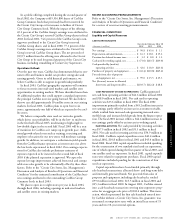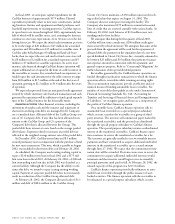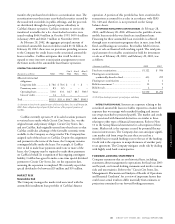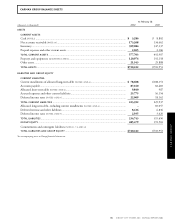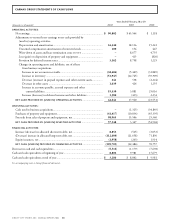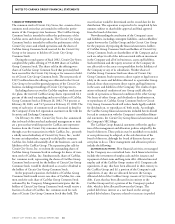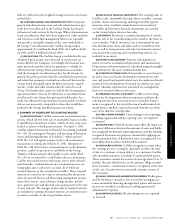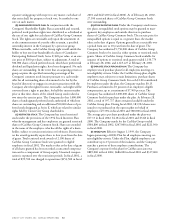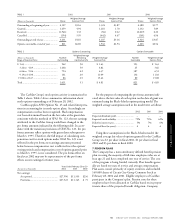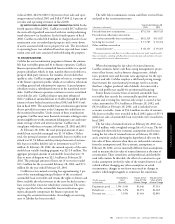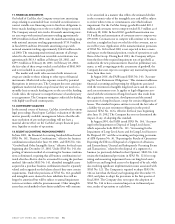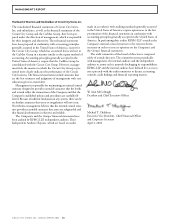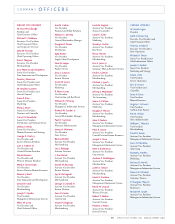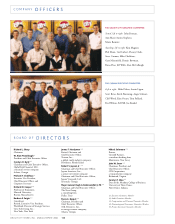CarMax 2002 Annual Report Download - page 92
Download and view the complete annual report
Please find page 92 of the 2002 CarMax annual report below. You can navigate through the pages in the report by either clicking on the pages listed below, or by using the keyword search tool below to find specific information within the annual report.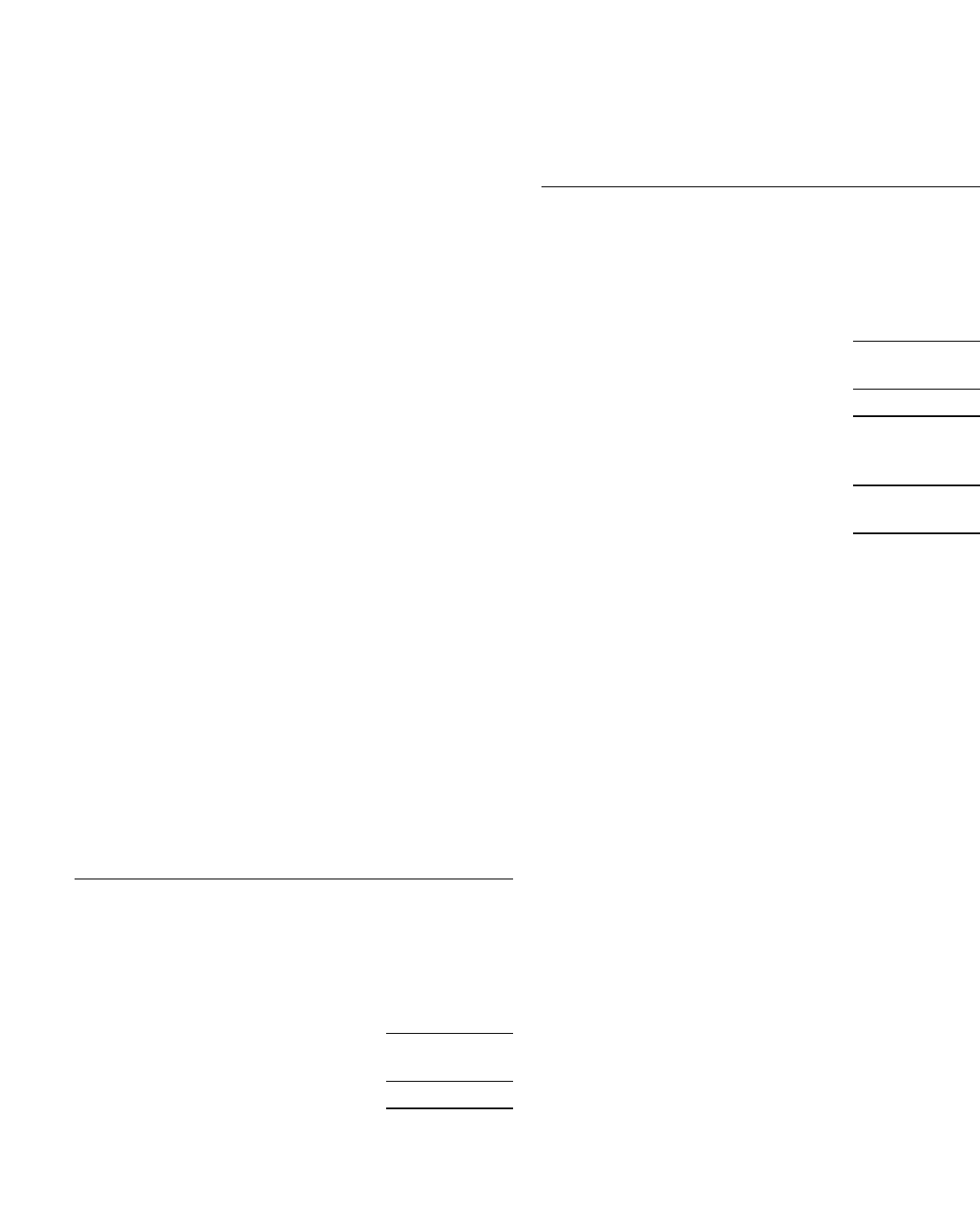
CIRCUIT CITY STORES, INC. ANNUAL REPORT 2002 90
(L) STOCK-BASED COMPENSATION: CarMax accounts for stock-
based compensation in accordance with Accounting Principles
Board Opinion No. 25, “Accounting For Stock Issued to
Employees,” and provides the pro forma disclosures required by
SFAS No. 123, “Accounting for Stock-Based Compensation.”
(M) DERIVATIVE FINANCIAL INSTRUMENTS: On behalf of CarMax
and in connection with securitization activities, the Company
enters into interest rate swap agreements to manage exposure to
interest rates and to more closely match funding costs to the use
of funding. The Company adopted SFAS No. 133, “Accounting
for Derivative Instruments and Hedging Activities,” as amended,
on March 1, 2001. SFAS No. 133 requires the Company to rec-
ognize all derivative instruments as either assets or liabilities on
the balance sheets at fair value. The adoption of SFAS No. 133
did not have a material impact on the financial position, results
of operations or cash flows of the Group. The changes in fair
value of derivative instruments are included in earnings.
(N) RISKS AND UNCERTAINTIES: CarMax is a used- and new-car
retail business. The diversity of CarMax’s customers and suppli-
ers reduces the risk that a severe impact will occur in the near
term as a result of changes in its customer base, competition or
sources of supply. However, because of CarMax’s limited overall
size, management cannot assure that unanticipated events will
not have a negative impact on CarMax.
The preparation of financial statements in conformity with
accounting principles generally accepted in the United States of
America requires management to make estimates and assump-
tions that affect the reported amounts of assets, liabilities, rev-
enues and expenses and the disclosure of contingent assets and
liabilities. Actual results could differ from those estimates.
(O) RECLASSIFICATIONS: Certain prior year amounts have been
reclassified to conform to classifications adopted in fiscal 2002.
3. PROPERTY AND EQUIPMENT
Property and equipment, at cost, at February 28 is summarized
as follows:
(Amounts in thousands) 2002 2001
Land and buildings (20 to 25 years) ....................... $ 3,442 $101,382
Land held for sale ................................................... 8,762 27,971
Land held for development .................................... 8,021 4,285
Construction in progress ........................................ 64,122 14,324
Furniture, fixtures and equipment
(3 to 8 years) ..................................................... 69,435 64,866
Leasehold improvements (10 to 15 years)............... 17,281 21,196
171,063 234,024
Less accumulated depreciation and amortization.... 50,087 41,866
Property and equipment, net.................................. $120,976 $192,158
Land held for development is land owned for future sites
that are scheduled to open more than one year beyond the fiscal
year reported.
4. DEBT
Long-term debt of the Company at February 28 is summarized
as follows:
(Amounts in thousands) 2002 2001
Term loans.............................................................. $100,000 $230,000
Industrial Development Revenue
Bonds due through 2006 at various
prime-based rates of interest
ranging from 3.1% to 6.7%.............................. 3,717 4,400
Obligations under capital leases.............................. 11,594 12,049
Note payable .......................................................... 826 2,076
Total long-term debt............................................... 116,137 248,525
Less current installments ........................................ 102,073 132,388
Long-term debt, excluding current installments..... $ 14,064 $116,137
Portion of long-term debt, excluding current
installments, allocated to the
CarMax Group ................................................. $ – $ 83,057
Portion of current installments of long-term
debt allocated to the CarMax Group ................ $ 78,608 $108,151
In July 1994, the Company entered into a seven-year,
$100,000,000 unsecured bank term loan. The loan was restruc-
tured in August 1996 as a six-year, $100,000,000 unsecured
bank term loan. Principal is due in full at maturity with interest
payable periodically at LIBOR plus 0.40 percent. At February 28,
2002, the interest rate on the term loan was 2.25 percent. This
term loan is due in July 2002 and was classified as a current lia-
bility at February 28, 2002. Although the Company has the
ability to refinance this loan, it intends to repay the debt using
existing working capital.
In June 1996, the Company entered into a five-year,
$130,000,000 unsecured bank term loan. Principal was due in
full at maturity with interest payable periodically at LIBOR
plus 0.35 percent. As scheduled, the Company used existing
working capital to repay this term loan in June 2001.
The Company maintains a multi-year, $150,000,000 unse-
cured revolving credit agreement with four banks. The agree-
ment calls for interest based on both committed rates and
money market rates and a commitment fee of 0.18 percent per
annum. The agreement was entered into as of August 31, 1996,
and expires on August 31, 2002. No amounts were outstanding
under the revolving credit agreement at February 28, 2002 or
2001, and the Company does not plan to renew this agreement.
In November 1998, CarMax entered into a four-year,
$5,000,000 unsecured promissory note. A portion of the prin-
cipal amount is due annually with interest payable periodically
at 8.25 percent. The outstanding balance at February 28, 2002,
was $826,000 and was included in current installments of long-
term debt.



